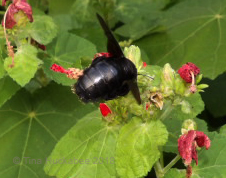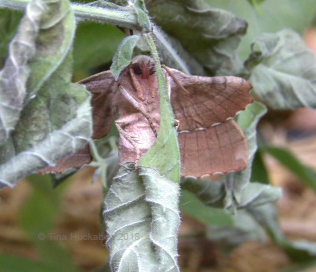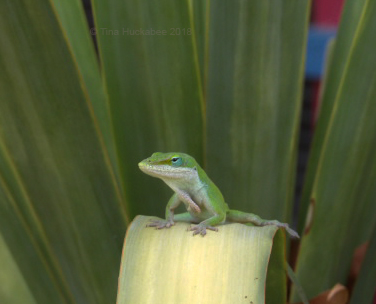Just a quick howdy do! for September’s Wildlife Wednesday, recapping a few flitting winged things from this past month. August is typically hot and quiet, but the garden and its inhabitants remain full of energy and life, even when the gardener drags.
For this whole growing season, I haven’t snagged one good photo of my favorite native bee, the Horsefly-like Carpenter bee, Xylocopa tabaniformis.
There are many of these busily buzzing, nectar-stealing carpenter bees in my garden, but this is the best shot I’ve managed this year. I’m either too slow with the click, or choose a ridiculously windy day to shoot, or am distracted and lose sight of my subject. The bees keep their cool though, working the garden, laying eggs for the next generation, and taunting the gardener with their charm. There’s still plenty of time to work on attaining some decent photos before the days are significantly shortened and these bees bed down for winter. Stay tuned!
I’m continuing to enjoy the Turk’s cap visits of several Southern Carpenter bees, Xylocopa micans.
Like the Horsefly-like carpenter bees, the Southern Carpenter bees nectar-steal and favor Turk’s caps blooms, though I have also seen them at the brilliantly blue, Majestic sage blooms.
These bees are so large, they are easy to spot in the garden, even from a distance.
The big butterflies are now more common, as is typical for the late summer. This Eastern Tiger Swallowtail, Papilio glaucus, nectared at the dramatic flowers on one of my Mexican Orchid trees, which is a favorite of a variety of bees and butterflies.
It took me some time perusing Austin area iNaturalist photos to identify this emerging moth as a Virginia creeper Sphinx, Darapsa myron.
I love his/her little face and tiny chocolate-drop eyes. Some bird-delivered Virginia creeper (the host plant for this moth), growing in my back garden, was probably the food source for the moth in larval stage. This adult emerged in late afternoon from a chrysalis situated on a branch of a Drummond’s ruellia.
The dragons and damsels zoom throughout my garden, but perch near the pond. I think this is a female Dusky Dancer, Argia translata.
The damsel was in nearly constant motion and I took the photo at a distance, so for identification purposes, the photo is not as clear as I’d like. The Dusky Dancer is a common predator and widespread in Texas. The purple eyes are a marked feature for this particular species, so I’m reasonably confident I got this right.
This Pipevine Swallowtail, Battus philenor, has certainly seen better days.
I’m now growing pipevine plant and am enjoying more of these beauties as they float through the garden.
Early one morning I caught this fella nectaring on the salmon blooms of one of my Red Yucca plants.
This Leptoglossus phyllopus is one of the many leaf-footed bugs common in this region and they do fly.
No wings here, but the look on Mr. Green Anole suggests he’s weary of summer and ready for autumn. Or, maybe I’m just anthropomorphizing.
Yeah, that’s it.
I love these little guys and gals and they’ll be around until our chill arrives, which is months away.
What’s in your garden as we wrap up summer? Please share your critter happenings and don’t forget to leave a link to your post. Happy wildlife gardening!


























